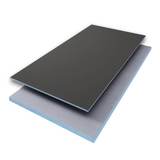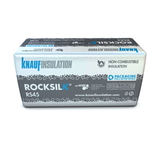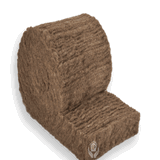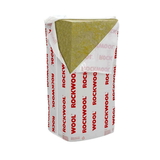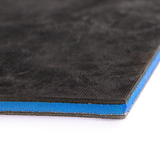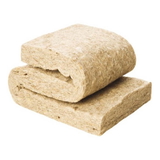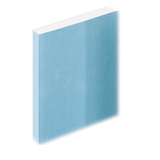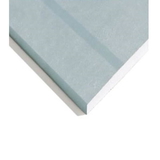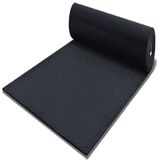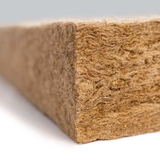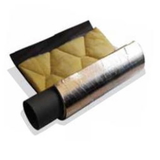- Blogs
- Soundproofing Your Home: Acoustic Insulation Solutions For Every Space
Soundproofing Your Home: Acoustic Insulation Solutions For Every Space

As insulation suppliers, we come often across customers who complain about unwanted noise in their homes. From outside traffic to noisy neighbours or just internal sounds that travel from one room to another, these sounds can be distracting and even affect your health.
Fortunately, soundproof insulation is an effective solution that can help you reduce unwanted noise and increase comfort and privacy.
In this article, we will explore different soundproofing strategies so that you can know how to soundproof your home effectively. Whether you are looking to reduce sound in a room or your entire house, we will provide you with practical tips and advice on how to choose the right materials and techniques for different spaces.
It is our hope that this article will help transform your home into a peaceful sanctuary where you can relax without any disruption from unwanted sounds
Different Types Of Noise In a Home:
There are various types of noise that can be present in a home, including:
-
Ambient Noise: This is the background noise in a room or space, which can come from things like traffic outside, nearby construction, or appliances running.
-
Airborne Noise: This is noise that travels through the air, such as talking, music, or the sound of a television.
-
Impact Noise: This is noise that is caused by an impact or vibration, such as footsteps, slamming doors, or dropping objects
-
Plumbing Noise: This is noise that comes from the plumbing system, such as water running through pipes, or a toilet flushing.
-
Mechanical Noise: This is noise that is produced by mechanical devices, such as fans, air conditioning units, or heating systems.
It's important to identify the sources of noise in a home in order to take steps to reduce or eliminate them, such as adding insulation, using sound-absorbing materials, or making repairs to reduce vibrations.
Identifying The Sources Of Unwanted outside noise at your home.
Noise is classified as sound that can be frustrating or annoying. Unwanted sound is a common problem that can affect the quality of life in any home. It can cause stress, sleep disturbances, including some major physical and mental health issues. However, there are various ways to soundproof a room, create a peaceful environment and block noise.
To eliminate noise, we need to identify the sources of unwanted noise in your home. To begin with, it is essential to understand that different types of noises require different solutions. For example, street noise or traffic noise from outside may require a different approach than the sound coming from your neighbour's TV next door.
One effective solution to tackle unwanted noise is by following some DIY soundproofing tips. These methods include sealing gaps around doors and soundproofing windows, adding insulation material to one wall or ceiling panel, or using acoustic curtains or panels to block outside noise.
While these solutions may not be as effective as professional soundproofing installations, they can still significantly reduce the amount of noise that enters your home.
Identifying the sources of unwanted noise can be challenging but crucial in creating a more peaceful living space. By making small changes like adding thicker curtains or sealing gaps you can significantly lower the amount of disruptive sounds within your home environment.
Understanding The Basics Of Acoustic Insulation and Ways to soundproof a Room.
Acoustic insulation is the process of reducing noise levels and controlling sound transmission by using sound-absorbing materials. Soundproofing materials are used to reduce the amount of noise that enters or leaves a room.
Sound insulation is essential for those who want to create a peaceful and quiet environment in their home, office, or studio. It can also help prevent noise complaints from neighbours.
Soundproofing materials come in different forms such as acoustic foam panels or acoustic plasterboards, sound-blocking curtains, Insulation rolls or batts and acoustic tiles. These materials offer a range of benefits including stopping noise, improved speech intelligibility, and enhanced privacy.
Installing these materials requires careful consideration of factors such as the desired level of sound reduction, the type of material to be used, and the installation process.
The installation process plays an important role in the effectiveness of acoustic insulation. The success of any soundproofing project depends on proper installation techniques.
The process involves selecting the right type of material for each application and installing it correctly to achieve optimal results. Professional installation is recommended for large-scale projects while smaller projects can be done by DIY enthusiasts with some basic knowledge about acoustic insulation.
Choosing The Right Materials For Each Space for better noise absorption.
As the saying goes, "soundproofing is an art form." It requires a deep understanding of acoustics, as well as the right materials and installation techniques to achieve optimal results. In this section, we will explore some insulation options and installation tips to help you choose the right materials for each space in your home to make your home effectively soundproof.
One important factor to consider when selecting sound proof insulation is the type of noise you want to block. For instance, if you live near a busy street or airport, you may need a higher density material to reduce external noise.
On the other hand, if you want to dampen sound within your home, such as in a music studio or home theatre, you may need a different type of insulation altogether. Some popular options include Mineral wool batts, cellulose insulation, and acoustic insulation rolls.
Another crucial aspect of soundproofing is proper installation. Even with the best materials available, incorrect installation can lead to poor results. Here are some tips for proper installation:
Mineral Wool Batts - Mineral wool batts are denser and therefore add mass to the application. Adding mass helps soundproof a wall or a roof for example. Use gloves and long sleeves when handling; cut slightly larger than needed for a snug fit; avoid compression.
Cellulose Insulation- It is commonly called recycled paper insulation and is known to have good acoustic properties. Use protective gear; install with blowing machine for even coverage; avoid overfilling.
Acoustic Partition Roll: These insulation rolls are mostly made of fibreglass and are tested for their thier soundproofing properties. Fibreglass is known to cause harm to the skin, so use gloves and masks when handling the insulation.
For those looking for more eco-friendly options, consider hemp insulation, sheep wool or wood fibre insulation batts. The insulating materials are naturally denser and therefore reduce the noise travelling in a room. They can be easily installed without gloves or masks
Remember that soundproofing requires attention to detail and expertise - don't hesitate to consult with an acoustic insulation specialist if needed.
Implementing Best Soundproofing Techniques For Different Areas
1. By soundproofing walls, floors, and ceilings, one can significantly reduce sound transmission between different areas of a home.
2. When soundproofing walls, one should consider the use of mass loaded vinyl, acoustic panels or acoustic plasterboards, Mineral wool batts and resilient channels, depending on the desired outcome.
3. To soundproof floors, one should look into the use of acoustic underlays, rugs, and acoustic carpet underlays in order to dampen the noise. When you apply some acoustic insulation floor, you reduce impact noises from below.
4. Acoustic insulation ceiling can be done by utilising acoustic partition rolls, placing some insulation batts between rafters or using soundproofing tiles to absorb noise.
5. Suitable acoustic pipe insulation will help reduce the operational noise of pipes. When denser acoustic pipe lagging is used they not only help insulate pipes and protect them from heat loss, but also absorb sound waves and prevent them from travelling through the length of the pipe.
Acoustic Insulation Wall Ideas - Soundproofing Walls![]()
Soundproofing techniques are essential for different areas of your home, and walls are no exception. We cannot stress its significance enough.
If you're looking to eliminate unwanted noise from outside or inside your house, there are various DIY solutions that are effective at blocking unwanted noise and achieving a quieter environment.
One effective soundproofing technique for walls is adding mass. Mass-loaded vinyl (MLV) is a popular choice as it's easy to install and provides excellent noise reduction. Additionally, Acoustic plasterboard with multiple layers is denser than standard drywall and can also deliver better sound insulation.
Another DIY solution for soundproofing walls is using acoustic batts. Acoustic batts are made of mineral wool with a high density to absorb sound waves effectively.
Implementing soundproofing techniques in your home is crucial for a peaceful and quieter environment. Soundproofing walls can significantly reduce unwanted noise both inside and outside of your house. Whether you choose to add mass with MLV or use acoustic insulation batts there are numerous DIY solutions that you can explore to achieve optimal results.
Ideas for acoustic insulation floor - soundproofing floors
Noise from footsteps, appliance vibrations, and music can quickly travel through floors, causing disturbances in the room below or adjacent spaces.
Fortunately, there are various flooring options and installation techniques that homeowners can explore to reduce unwanted noise.
One popular flooring option for soundproofing is carpeting. Carpets absorb sound waves instead of allowing them into the room.
Additionally, underlayment materials such as rubber or felt underlays can be placed beneath carpets to create an extra layer of insulation.
Hardwood floors may also be soundproofed by adding a layer of MLV or acoustic underlayment before installing the floorboards.
Another DIY solution for soundproofing floors is using area rugs or mats. These accessories help absorb sound waves and provide extra cushioning for walking or standing.
Soundproofing floors is just as important as walls, and homeowners have plenty of flooring options and DIY solutions to choose from depending on their lifestyles and budgets.
By exploring these techniques, you can significantly reduce noise pollution in your home and enjoy a quieter living space.
Frequently Asked Questions
How Much Does It Cost To Soundproof A Room Or A House?
The cost of soundproofing a room or a house in the UK can vary greatly depending on a variety of factors such as the size of the room or house, the level of soundproofing required, the materials used, and the complexity of the project.
As a rough estimate, the cost of soundproofing a single room can range from £500 to £5,000 or more. This could involve adding acoustic insulation to the walls, ceiling, and floors, sealing gaps and cracks, installing double glazed windows or secondary glazing, and using acoustic panels or curtains.
For a whole house, the cost can vary widely depending on the size and complexity of the project. It could range from £5,000 to £20,000 or more, depending on the extent of soundproofing required and the materials used.
It's important to note that these are rough estimates and the cost of soundproofing a room or a house in the UK will depend on your specific needs and the scope of the project. It's best to consult with a professional soundproofing company for a more accurate quote.
Can Soundproofing Completely Eliminate All Noise Coming From Outside?
The effectiveness of soundproofing depends on various factors. While special soundproofing techniques can significantly reduce unwanted noise, they may not completely eliminate all sounds.
The level of noise reduction achieved through soundproofing depends on the quality of materials used, the thickness of walls and ceilings, layers of drywall and other factors such as the type of windows and doors installed.
DIY soundproofing techniques can be effective but may not achieve the same level of noise reduction as professional installation.
It is important to consult with an acoustic insulation specialist to determine the best approach for your specific needs and environment.
Can I Soundproof A Room Without a Professional?
Soundproofing a room without hiring a professional can be akin to navigating uncharted waters. The task requires a combination of creativity, resourcefulness, and technical know-how.
DIY soundproofing methods exist, but they come with their own set of pros and cons. On the one hand, DIY options are often more affordable and allow for greater creative control over the finished product. On the other hand, they require significant time and effort to execute correctly and may not achieve the same level of soundproofing as hiring a professional.
Ultimately, the decision to hire a professional or tackle the project oneself depends on individual circumstances such as budget, time constraints, and desired outcome.
Will Soundproofing Affect The Aesthetics Of A Room?
When considering the impact of soundproofing on the aesthetics of a room, it is important to take into account the design elements that are already present.
DIY soundproofing solutions can be effective in reducing noise transmission without requiring major changes to a room's design.
However, it may be necessary to make some adjustments depending on the type of insulation used and the extent of sound reduction required.
Acoustic insulation specialists can provide advice on how to achieve optimal soundproofing results while maintaining the desired aesthetic appeal.
Ultimately, a successful soundproofing project should strike a balance between functionality and design, creating a comfortable and visually pleasing space for its occupants.
Conclusion:
When it comes to soundproofing a home, it can be a daunting task, but with the right solutions, you can transform your space into an oasis of peace and quiet.
The cost of soundproofing a wall or ceiling varies depending on the size of the space and the type of insulation used. While soundproofing can reduce significant noise levels, it is unlikely to eliminate all noise coming from outside.
Soundproofing does not have to be complicated or expensive. With some simple DIY techniques such as adding weather stripping or rugs, you can reduce noise levels without hiring a professional. However, for more significant improvements, professional installation may be required.
One concern people often have about soundproofing is that it will negatively affect the aesthetics of a room. But with modern acoustic insulation solutions such as decorative acoustic panels and curtains, you can enhance the look of your space while also reducing noise levels.
Finally, soundproofing not only reduces external noise but also improves acoustics inside a room by reducing echo and improving sound quality.
Whether you're looking for peace and quiet or better audio quality in your home theatre, the right soundproofing is an investment worth considering.
So don't let unwanted noise ruin your day – take action today and invest in effective acoustic insulation solutions! to improve the soundproofing of your home.
For Trade quality acoustic insulation like acoustic plasterboards, Carpet underlays, acoustic underlays, mineral wool batts, acoustic pipe lagging or acoustic partition rolls visit Buy Insulation Online. Along with supplying quality sound insulation products, we also help reduce your carbon footprint by planting a tree per order!

Samuel Hitch
Managing Director
Buy Insulation Online.
Leave A Reply
Your feedback is greatly appreciated, please comment on our content below. Your email address will not be published. Required fields are marked *






